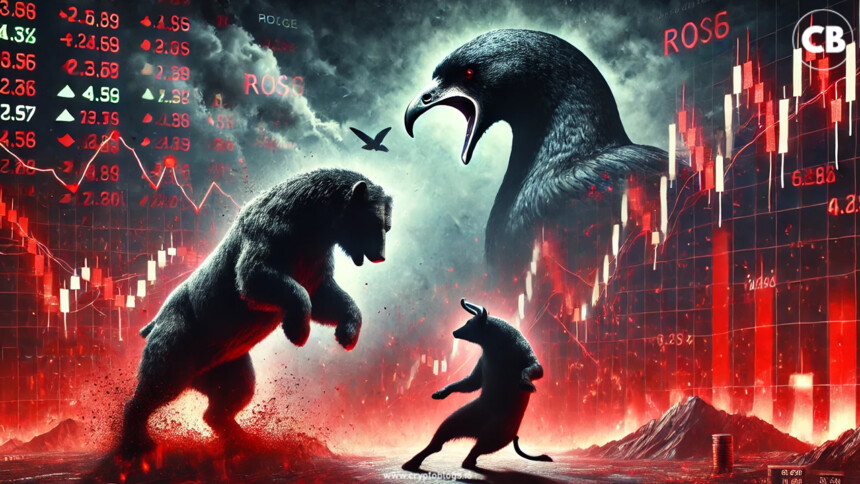If you are into the crypto or finance industry, you must have heard the term “black swan event”.. It refers to a rare and the most unpredicted occurrence that has severe consequences on the finance market.
On Monday, the world saw a glimpse of the Black Swan phenomenon as stocks tumbled, markets crashed and cryptocurrencies nose dived suddenly. According to analysts, US markets lost close to $1 trillion while the total value of the cryptocurrency market dropped by 12.9% to $1.96 trillion, losing over $292 billion.
Black Swan events can lead to dramatic and often unforeseen changes in market dynamics, prices, and investor sentiment. Let’s further elaborate the topic to understand how it occurs and what are the examples of it.
What is a Black Swan Event?
The Black Swan event is a concept that refers to the situation that occurs unexpectedly and impacts the market with a strong bearish sentiment. During this time, the crypto market witnesses massive selling or buying in live markets with prices showing extreme volatility for hours or even days. The effects of black swan events usually stay for a few days or even weeks. The uncertainties and insecurities caused by the black swan effect tends to create FUD (fear, uncertainty, doubt) in the cryptocurrency market.
This concept of Black Swan was popularized by Nassim Nicholas Taleb in his 2007 book “The Black Swan: The Impact of the Highly Improbable.” It highlights the profound impact and outlines such examples that are beyond the realm of normal expectations.
The potential for black swan events to occur can affect investors’ strategies and decisions in the cryptocurrency markets. Therefore, cryptocurrency traders keep an eye out for black swan events. Traders monitor the markets and make more careful decisions during periods of uncertainty.
Characteristics & Effects of Black Swan Event?
In Black Swan events, investors make quick decisions and adjust their investments accordingly which fuels high-paced activities in the market. They typically react by selling or buying cryptocurrencies in a quick rush. The scale of black swan events may vary on the origin, such as a global tragedy would affect the entire world whereas a small-scale event within a particular ecosystem would affect only its surroundings.
A black swan event has three main characteristics:
- Rarity: These events are extremely rare and cannot be predicted using standard financial models.
- Severe Impact: They have a massive impact on markets, often causing widespread disruption and significant financial losses.
- Retrospective Predictability: After the event has occurred, it is often rationalized in hindsight as something that could have been predicted, although this was not the case before it happened.
These events lead to extreme volatility with prices experiencing dramatic swings in response to sudden changes in market sentiment. It can severely undermine investor confidence and results in panic selling and massive market withdrawals. It often also attract heightened regulatory scrutiny and prompting stricter controls to prevent likewise incidents in futrure – for example; the crash of FTX exchange.
Examples of Black Swan Events in the Crypto Industry
1. Mt. Gox Hack (2014)
Mt. Gox – once the largest Bitcoin exchange – was handing over 70% of all Bitcoin transactions worldwide before it collapsed in February 2014. The exchange lost a mammoth of 850,000 BTC (valued at around $450 million at the time) in a security breach and the news shook the entire crypto market. The aftermath of this hack caused a significant drop in Bitcoin price and raising serious concerns about the security of cryptocurrency exchanges.
2. The DAO Hack (2016)
The second major Black Swan event occurred when the Decentralized Autonomous Organization (DAO) was hacked in June 2016, resulting in the theft of about $60 million worth of ETH. The hacker exploited a vulnerability in the DAO’s code and created a hard fork in the Ethereum blockchain, separating Ethereum (ETH) and Ethereum Classic (ETC). This incident significantly impacted ETH price and highlighted the need for security risks associated with smart contracts.
3. COVID-19 Pandemic (2020)
The outbreak of COVID-19 in early 2020 caused unprecedented economic disruption ono global scale. With the cryptocurrency market not being an exception, it experienced a dramatic sell-off in March 2020 – known as “Black Thursday.” On this day, the price of Bitcoin plunged by nearly 50% in a single day. The pandemic induced panic on the interconnectedness of global markets and led market sentiment to be extremely greedy for days.
4. FTX Crash (2022)
The collapse of crypto exchange FTX in November 2022 marks the most unpleasant incident in the history of the crypto industry. The fall of the FTX occurred due to allegations of fraudulent activities and mismanagement of funds. This crash resulted in a massive liquidity crisis, leaving customers unable to withdraw their assets and leading to a significant drop in the prices of major cryptocurrencies. This not only caused financial losses for many investors but also intensified regulatory scrutiny and calls for greater transparency in the crypto industry.
5. Terra-LUNA Collapse (2022)
The collapse of the Terra ecosystem in May 2022 was triggered by the failure of its algorithmic stablecoin, TerraUSD (UST). It lost the peg to the US dollar due to a technical error in the smart contract code. This incident led to a massive sell-off in LUNA and other associated cryptocurrency, causing its value to plummet from over $80 to less than a cent within days. The Terra-LUNA collapse wiped out billions of dollars from the crypto market. It caused significant losses for investors and raised questions about the stability and viability of algorithmic stablecoins.
6. Japan Crypto Market Crash (August, 2024)
While it was not on that larger scale, the recent crash of the Japanese stock market could be considered the latest example of a Black Swan event. On August 5 2024, the Japanese stock market experienced a sudden and severe crash, triggered by a combination of regulatory changes and significant sell-offs by major investors. This led to a sharp decline in the value of several major cryptocurrencies within hours, exacerbating fears of market instability and prompting immediate responses from global regulatory bodies. The crash highlighted the vulnerability of the crypto market to regulatory actions and the cascading effects of large-scale liquidations.
Conclusion
Black swan events are a reminder of the inherent unpredictability of the cryptocurrency and global finance markets. While they can lead to significant losses and upheaval, they also underscore the importance of resilience, innovation, and cautious investment strategies. While these events are unexpected most of the time, it drives a unanimous amount of fear of financial loss for investors. Such events keep occurring once in a year or in months due to the interconnected nature of global markets and unpredictability of future occurrences.
Keep Reading:







